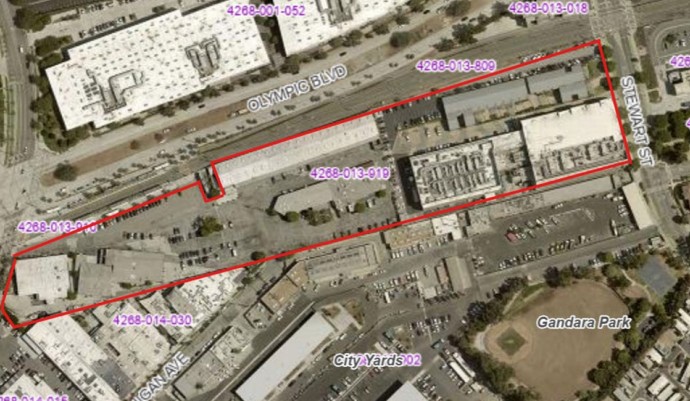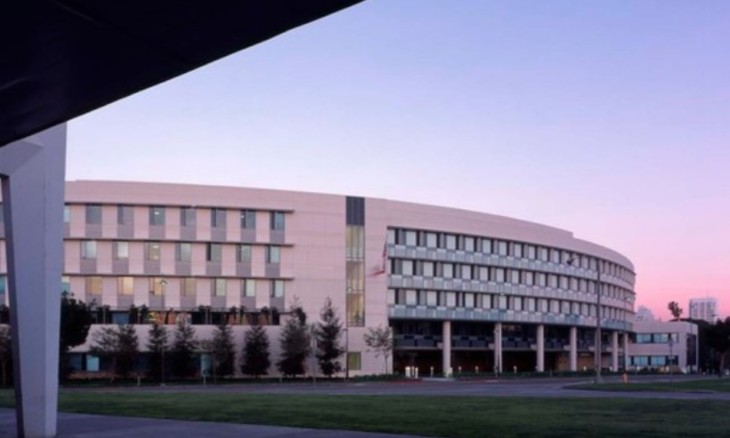
There has been significant confusion and debate surrounding the financial performance of the many SMMUSD facilities projects. The absence of clear and accessible financial performance reporting is the cause.
The issue is not just academic.
District Facilities Improvement Program Overview
The district’s currently active facilities improvement program (FIP) was launched in 2009 with Measure BB bond funding and now includes four bond issues (BB, ES, SMS & M). This program has total funding estimated at $1.36 billion as of 02-23-2021 which includes $1.33 billion from the four bond issues (a), a $20 million SMC Grant for the JAMS auditorium and estimated $8 million from interest.
At completion, this funding would represent a cumulative facility investment of approximately $146,000 per currently enrolled student seat (b). Despite this level of expenditure and funding, the District anticipates additional expenditures beyond this current approved funding. (c)
According to the District’s summary of anticipated total project final cost estimates published on February 18, 2021 (d), $967 million of this FIP funding has been committed across approximately 155 approved projects. As a point in time snapshot, it is not clear what the effective date is for the estimates provided. The report does not include either performance metrics or prior project totals.
These existing 155 projects represent about 71% of the total approved and available funding noted above. Comparing the project total cost estimates to the approved total funding noted above would indicate that an estimated $386 million in uncommitted funding remains available for future projects.
The 02-23-2021 bond funding report breaks out project spending to an unspecified date for hard and soft costs within each bond, but does not have estimated final costs and are prepared on a different project definition basis. They do not include either performance metrics or prior totals.
Why does this matter?
Sidestepping the issue of overall need for such an expansive program in a school district with declining enrollment (b), the key stakeholder issue is effectiveness of financial management on resource expenditures.
Without consistently reported, updated, understandable and quantified project financial performance data, external stakeholders (and the Board) have no idea how well bond resource spending is being managed, or what to expect. Project overruns reduce the available funding for other projects, potentially accelerating the need for still more bond measures if offsetting savings on other projects cannot be found. Project overruns potentially indicate project management issues while underruns reduce the need for additional funding and are one indicator of good management.
Standard Capital Project Reporting
Companies in the private sector spending a fraction of what is being spent by the District have regular standard financial reporting that encapsulates the total financial performance for each approved project and that also rolls up to overall program performance. In this case, that would be a roll up to the total bond level. This synthesized quantitative approach is standard best practices throughout industry. In contrast, the current FIP program performance reporting available to external stakeholders is almost exclusively qualitative (e).
Appropriately structured capital project financial performance reporting would clearly answer the following questions on a recurring basis:
- What are the financial benchmarks for each approved project (e.g., original authorizing budget, updated estimated final cost, final certified cost – all fully inclusive of hard and soft costs)?
- How is the project’s financial progress tracking over time (i.e., what are the actual costs and what is the estimate to complete at each reporting period)?
- What are the financial performance metrics for each approved project, and why (e.g., variance of estimated final cost to budget; changes in estimated final cost, including scope changes)?
- What is the amount of each funding source being used for each project, if more than one source (e.g., bond) is being utilized?
Appropriately structured capital project financial performance reporting would include the following elements:
- Original (Authorizing) Budget. Whatever financial projections authorize a project to break ground is the original authorizing budget, both hard and soft costs. All subsequent project reporting needs to reference this original budget. There is only ever one original authorizing budget for a project. The related project scope needs to be clearly described and accompany the Original Budget in the reporting.
- Estimated Final Costs (EFC). At every update, the project’s EFC must reflect the most current estimated total final cost at completion, both hard and soft costs.
- Variance Analyses. The current EFC should be compared to the Original Budget and to the prior reported EFC, with significant variances to the prior EFC explained. Changes in scope are a change to the EFC, not a change to the Original Budget.
The EFC should detail the constituent components of Actual Spend To DateandtheEstimate to Complete (ETC). A static ETC, for example, indicates a possible project underrun.
Existing Processes, Data and Publicly Available Reports
Prior public Board discussions on the effectiveness of capital project bond spends have referenced the Bond Oversight Committee (BOC) (f), bond audits (g) and financial statement audits (h) as evidence of sufficient financial controls. The issue is that these controls monitor whether or not the bond funds were spent on bond-approved projects or, in the case of audits, whether the financial statements can be relied upon. None of these activities provide information on how effectively the funds are being spent (e.g., overruns, underruns, etc.).
The SMMUSD website’s BOC page (f) notes that the BOC’s function is to review expenditure reports produced by the District to ensure that expenditures align with the purposes set forth in the bond measures and that no bond proceeds were used for operating expenses.
Financial statement audits (h) only certify the reliability of the accounting numbers to present fairly, in all material respects, the District’s financial position. They do not provide judgment on what the numbers are saying. For example, the audited financial results may indicate deficits, but as long as they are properly stated, the audit opinion is considered “clean.” Additionally, audited financial statements are issued once per year, six or more months in arrears.
The District’s Financial Oversight Committee (FOC) (i) can provide non-binding recommendations on operating financial issues, compliance with Measure R, City of Malibu joint-use agreement with the District, and the District’s capital program. However, with only ad hoc and capital project financial reporting with potentially incomplete performance data, the FOC’s capital spend overview effectiveness is minimized.
None of these internal processes provide neither the Board nor external stakeholders with timely, relevant and actionable capital spending financial performance information.
The information required for this level of sustained, informative and actionable financial performance reporting exists in the District’s financial systems. Moreover, the effort involved can be minimized over time as processes mature. In addition, the number of projects active at any point in time is less than the total funded by the bonds. Of the 155 projects authorized under the currently active bonds, 89 are complete, 64 in process and 2 either pending or postponed.
In discussions with District staff, they noted that the Board has been provided with certain elements of this performance reporting on an infrequent ad hoc basis. The non-systematic, and apparently very infrequent nature of this reporting, along with its inaccessibility to external stakeholders, significantly diminishes its value to both the Board and external stakeholders.
Clarity and Stakeholders
The impact on the community of this level of funding, expenditure and major construction is significant. The need for best practices financial reporting is obvious.
Understanding project financial performance based on transparent, objective, standardized, and appropriately detailed capital project reporting is essential to all stakeholders. The stakeholders’ (including the Board’s) value of properly structured capital project financial reporting is dependent on timeliness. Project financial reports would be updated and published either monthly or quarterly (i.e., every 3 months).
In its absence, external stakeholders have no information on the FIP program’s financial performance, and they have no basis to believe the Board is in any better position. Without this reporting, the Board has no early warning process to identify and manage issues on a timely basis. It is difficult to build trust across all key stakeholders in such an environment. Without trust, it will be very difficult to justify approval of additional bond funding requests.
By Marc L. Verville for SMa.r.t. (Santa Monica Architects for a Responsible Tomorrow)
Thane Roberts, Architect, Robert H. Taylor AIA; Ron Goldman FAIA, Architect; Dan Jansenson, Architect, Building and Fire-Life Safety Commission; Samuel Tolkin Architect; Mario Fonda-Bonardi, AIA, Planning Commissioner; Marc L. Verville M.B.A., CPA (inactive); Michael Jolly, AIRCRE
References:
a) SMMUSD Bond Issue Summary
https://www.smmusd.org/Page/5689
b) Enrollment as of 02-23-2021 per Second Interim Budget Presentation Pg. 25 https://www.smmusd.org/cms/lib/CA50000164/Centricity/Domain/300/BudgetInfo/SecondInterimBudgetPresentation20-21.pdf
c) Additional Modernization Requirements https://www.smmusd.org/cms/lib/CA50000164/Centricity/Domain/3016/21stcenturyschools.pdf https://www.smmusd.org/cms/lib/CA50000164/Centricity/Domain/3016/21st-currentneeds.pdf
d) SMMUSD FIP Project Listing as of 02-18-2021 Home Page: https://www.smmusd.org/Page/6029 Project List: https://www.smmusd.org/cms/lib/CA50000164/Centricity/Domain/4380/FIP-ProjectList.pdf
e) Facility Improvement Projects (FIP) https://www.smmusd.org/domain/4176 https://www.smmusd.org/Page/5631 https://www.smmusd.org/domain/4189
f) Citizens Bond Oversight Committee http://fip.smmusd.org/CitizensOversight/index.html
g) Bond Audits
https://www.smmusd.org/Page/5573
h) SMMUSD Audited Financial Statements https://www.smmusd.org/cms/lib/CA50000164/Centricity/Domain/300/FinReports/AuditReport1920.pdf
i) SMMUSD Financial Oversight Committee https://www.smmusd.org/Page/3901























